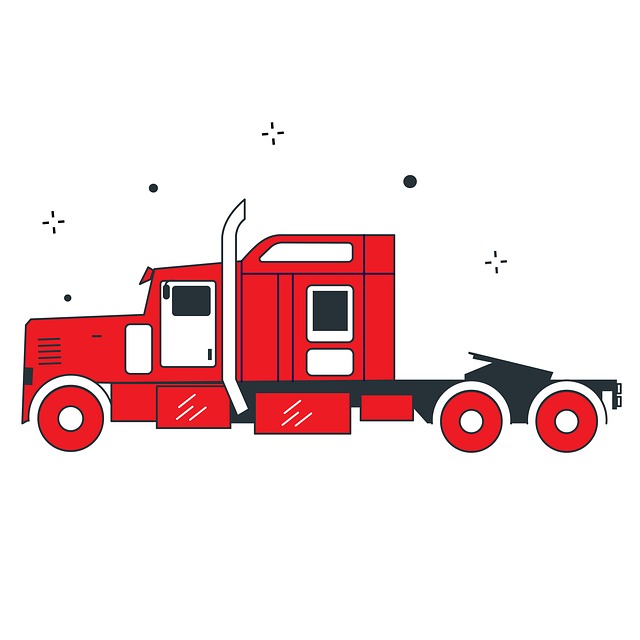Looking to register your car in California? This comprehensive guide walks you through every step, from understanding the VIN verification process using a reliable vin verifier to gathering essential documents. Learn about different registration types and fee payment options, then submit your application at a DMV office. Discover post-registration tasks and tips for keeping accurate vehicle records. Streamline the process and hit the road with confidence!
- Understanding the Vehicle Identification Number (VIN) Verification Process
- Gather Necessary Documents for Car Registration in California
- Choosing the Right Registration Type and Fee Payment
- Submitting Your Application and Visiting the DMV Office
- Post-Registration Steps and Maintaining Your Vehicle's Records
Understanding the Vehicle Identification Number (VIN) Verification Process

When registering your car in California, one crucial step involves verifying your Vehicle Identification Number (VIN). This process ensures that the vehicle matches the information provided on the registration documents and helps prevent fraud. A VIN verifier, whether it’s a mobile vin inspection or a traditional service, checks key details embedded within the VIN, including the vehicle’s make, model, year, and even manufacturing plant.
A mobile vin verification service offers convenience by allowing you to get this check done quickly at your location. This is especially useful for those who have recently purchased a used car, as it provides peace of mind that all documentation is accurate and up-to-date. Proper VIN verification not only facilitates a smoother registration process but also plays a vital role in maintaining the integrity of California’s vehicle record system.
Gather Necessary Documents for Car Registration in California

To register your car in California, you’ll need several essential documents on hand. Before you begin the process, make sure to gather the following items: vehicle registration certificate from the previous state (if applicable), proof of insurance, a valid driver’s license, and perhaps most importantly, your vehicle’s VIN (Vehicle Identification Number). The VIN is crucial for accurate identification and can be found on the vehicle’s title or in its engine compartment. In California, you might also consider using a mobile VIN verification service to ensure all details match up before proceeding with registration.
Additionally, prepare an inspection certificate from a certified mechanic or a smog test result if your car is older than seven years. These documents play a vital role in the registration process, ensuring that your vehicle meets safety and environmental standards. Remember to keep these records secure as you’ll need them throughout the registration procedure, which often involves multiple trips to the DMV (Department of Motor Vehicles) or designated registration centers.
Choosing the Right Registration Type and Fee Payment

Choosing the right registration type is a crucial step when registering your car in California. Different types of vehicles require specific procedures and fees. For instance, private passenger cars, motorcycles, and light trucks each have distinct categories within the California Department of Motor Vehicles (DMV) system. The DMV offers various options, such as regular registration or special plates for specific causes. It’s essential to select the most suitable category based on your vehicle’s make, model, and intended use.
When it comes to fee payment, understanding the costs associated with each registration type is vital. California charges fees that cover vehicle registration, license plate issuance, and other related services. These fees can vary depending on factors like the type of vehicle, emissions standards met, and any additional options chosen. A reliable tool, such as a mobile VIN verifier or online resources provided by the DMV, can assist in accurately determining the correct fee for your vehicle’s unique identification number (VIN inspection). Additionally, prompt payment is encouraged to avoid penalties and ensure your registration process remains smooth.
Submitting Your Application and Visiting the DMV Office

After completing your application for car registration, it’s time to submit it along with the required documents and fees to the DMV office. This can typically be done in person at a nearby California DMV field office. Be prepared to present your vehicle’s registration documents, proof of insurance, and identification. The staff will verify your information and conduct a vin inspection (vehicle identification number) to ensure the car’s history aligns with the details provided.
During your visit, you may have the option to utilize mobile vin verification services if available in your area. This allows for a more convenient process, as you can transmit your vehicle’s information remotely instead of visiting a physical location. Alternatively, some services offer on-site vin inspection and registration support through mobile verifiers, further streamlining the task.
Post-Registration Steps and Maintaining Your Vehicle's Records

After successfully registering your vehicle in California, there are several important post-registration steps to complete to ensure a smooth ownership experience. One crucial task is to obtain and maintain accurate vehicle records, which includes keeping detailed documents related to maintenance, repairs, and modifications. This information can be vital for future reference and may even simplify potential insurance claims or legal matters.
Additionally, consider utilizing services like mobile vin inspection or a vin verification tool to ensure the vehicle’s identity and history are accurate and up-to-date. A Vehicle Identification Number (VIN) is a unique code that can reveal crucial details about a car’s past, including ownership history, accident reports, and maintenance records. Regularly checking and updating this information through reliable methods like a mobile vin verification service is beneficial for both owners and potential buyers, fostering transparency in the automotive market.
Registering a car in California involves a straightforward process, from VIN verification using a reliable vin verifier to submitting your application at a DMV office. By ensuring you have all the necessary documents and choosing the appropriate registration type, you can efficiently complete the registration, legally operate your vehicle, and maintain accurate records for future reference.
